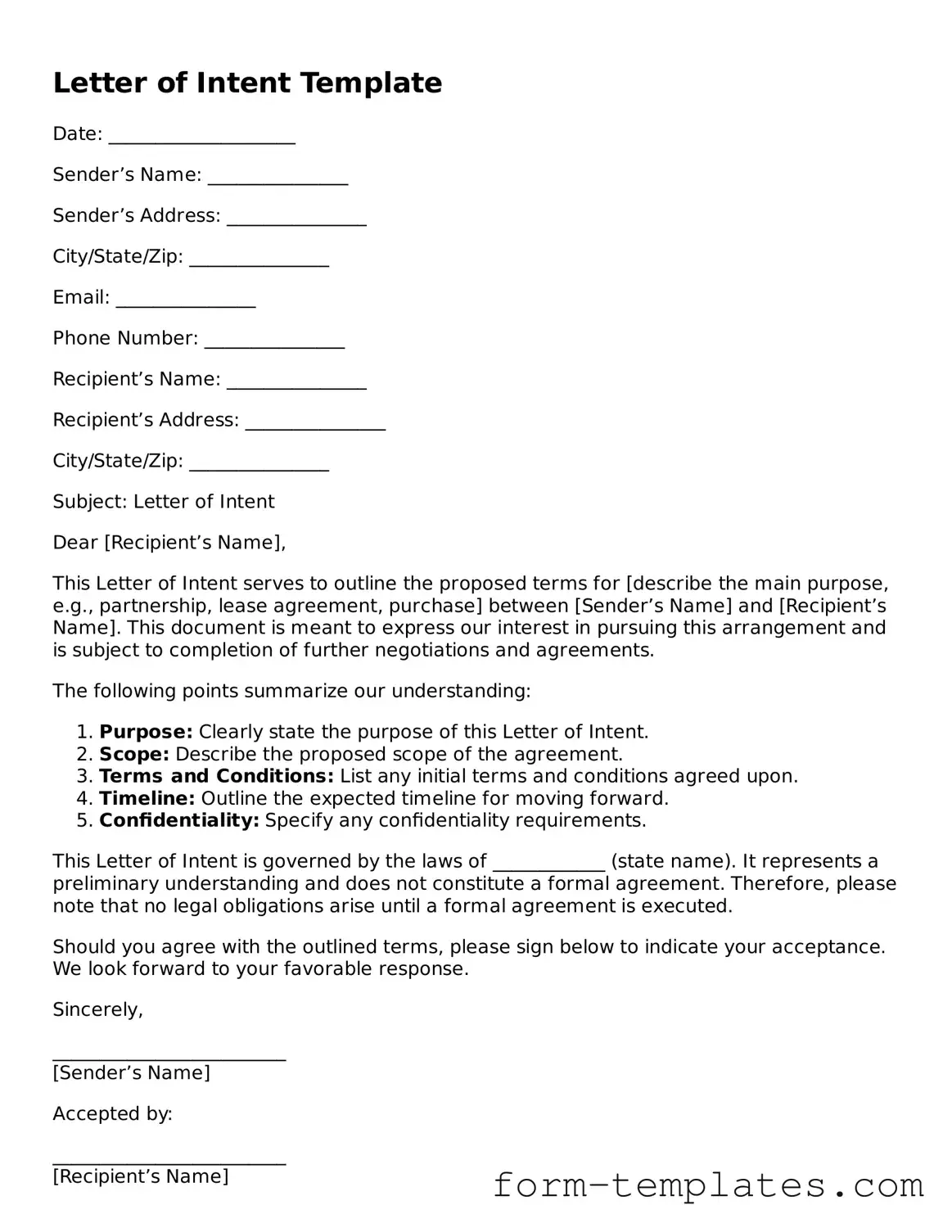Letter of Intent Template
Date: ____________________
Sender’s Name: _______________
Sender’s Address: _______________
City/State/Zip: _______________
Email: _______________
Phone Number: _______________
Recipient’s Name: _______________
Recipient’s Address: _______________
City/State/Zip: _______________
Subject: Letter of Intent
Dear [Recipient’s Name],
This Letter of Intent serves to outline the proposed terms for [describe the main purpose, e.g., partnership, lease agreement, purchase] between [Sender’s Name] and [Recipient’s Name]. This document is meant to express our interest in pursuing this arrangement and is subject to completion of further negotiations and agreements.
The following points summarize our understanding:
- Purpose: Clearly state the purpose of this Letter of Intent.
- Scope: Describe the proposed scope of the agreement.
- Terms and Conditions: List any initial terms and conditions agreed upon.
- Timeline: Outline the expected timeline for moving forward.
- Confidentiality: Specify any confidentiality requirements.
This Letter of Intent is governed by the laws of ____________ (state name). It represents a preliminary understanding and does not constitute a formal agreement. Therefore, please note that no legal obligations arise until a formal agreement is executed.
Should you agree with the outlined terms, please sign below to indicate your acceptance. We look forward to your favorable response.
Sincerely,
_________________________
[Sender’s Name]
Accepted by:
_________________________
[Recipient’s Name]
Date: ____________________
